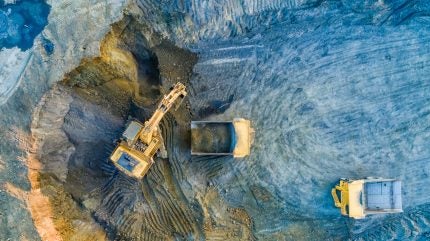Sign up for daily news updates from CleanTechnica on email. Or follow us on Google News!
The howling wind rises in pressure and sound, like an oncoming train. Then it arrives with speed and force, filling the landscape with leaves and branches in its path. Sheets of rain blow sideways. Large trees seem grabbed by a claw from their roots and crash to the ground, ripping out power lines. Circuit-breaker boxes explode. Sheds are sucked into the air, cars twist in a frenzy. The wind punishes, relentlessly, peeling back roofs. With the debris slamming in its path, would hurricane-proof houses be able to withstand its devastating effects?
New companies and approaches to structural resiliency suggest that, yes, we can learn to withstand severe damage from many hurricanes.
At this moment in time of escalating impacts due to the climate crisis, isn’t it necessary for us all to fortify our homes so they can stand up to these extreme storms?
 Chip in a few dollars a month to help support independent cleantech coverage that helps to accelerate the cleantech revolution!
Chip in a few dollars a month to help support independent cleantech coverage that helps to accelerate the cleantech revolution!
The hurricane risk to built structures this year is staggering: 30 million US homes with a combined value of $8.5 trillion are threatened.
As the EDF explains, a warming climate means stronger winds, higher storm surges, and record rainfalls during hurricane season. Climate and hurricanes are interrelated because evaporation intensifies as temperatures rise, and so does the transfer of heat from the oceans to the air. As the storms travel across warm oceans, they pull in more water vapor and heat. That means stronger winds, heavier rainfall, and more flooding when the storms hit land.
The relationship between the wind speed and corresponding damage to structures and components is a key element in storm risk assessment and loss estimation models. According to recent R&D, this relationship is established through the fragility functions, which represent the conditional probability of a building to experience or exceed a specific damage level as a function of the wind speed. When calculating such impacts, it is important to consider the influence of various factors such as wind-born debris, shielding effect from neighboring houses and trees, aging effects, and the progressive nature of wind failure.
What Can Homeowners Do To Prepare For Hurricanes?
In the US and beyond, urban researchers and practitioners are increasingly confronted with concerns about the links between housing and climate risks. Questions of how these impacts play out, how they can be managed, and with what implications for whom now loom large. Repairs after hurricanes can be minor and cosmetic or emotionally upsetting, like shattered windows. Storms today may also cause complete destruction.
Older structures can inherit increasingly obsolete building technologies, systems, and standards compared with newer homes constructed under improved building codes. Disparities also arise due to structures’ physical breakdown over time and the influence of differing investments in maintenance and repair. The history of a home’s repairs takes on enhanced significance due to the effects of the climate crisis. For example, energy-inefficient homes become a decarbonization challenge, or as assets built before more recent building code improvements face growing physical risk exposures.
Experts stress that effective technical construction capacity-building should involve active collaboration with communities to learn their perspectives and then center and address their needs and concerns given their available resources and alternatives. Building capacity for constructing safer housing, mitigating hazards, and owner-generated disaster risk reduction have become more common as local knowledge and other resources applied to building housing are resulting in structures that respond well to common structural loads.
Humans are resilient creatures, and many people who live in hurricane-prone areas are heeding the call to be pro-active in protecting their homes against extreme weather. Homeowners need to anticipate physical damages from disasters or otherwise prepare them for a climate-changed future. In a resilient community, buildings should rapidly recover their ability to be occupied after surviving a disaster. What are people doing to hurricane-proof their homes?
Retrofitting interventions are taking look different depending on the particular US region due to varying climate risks. Some are starting with water-saving and energy efficiency measures against drought, elevated summer heat, and other intensified extreme weather. Other homeowners are opting for home hardening improvements like wind-resistant roofing.
A small portion of homeowners are shoring up elevation to reduce flood risk. Basic building materials like wood, concrete, or steel are generally reliable when in good condition and connected together properly, as they can transfer the load all the way down to the foundation. Other ideas to lead to a hurricane-proof a home include adding a sealed roof deck can be for keeping out rain during a mega storm, switching to wind-rated garage doors to prevent gusts rushing inside a house, or replacing an existing roof with a metal or tiled one to add inherent wind resistance. By reinforcing the structure, using hipped roofs rather than gable ends or installing parapets to keep off some of the sharpest winds as they race up walls, people can harden their homes.
The Circle Will Be Unbroken By Hurricanes — Hopefully
An especially appealing approach to a hurricane-proof home starts with its initial construction and design — one that is circular.
Deltec Homes, a North Carolina firm, makes such prefabricated circular houses. Their structures have tightly sealed roofs and walls pinned to the foundations, which are designed to survive hurricanes. Deltec uses strong southern yellow pine as timber, the extra-sturdy pieces sawn from the heart of these trees.
Instead of pushing against the flat sides of standard houses, circularity helps the wind to skip away from the structure, which can shrink gust impacts by around 30%. The roof is like a giant horizontal bicycle wheel with spokes connecting the edge to the center, and everything is fastened with proprietary hurricane straps. Distributing winds around the house with the help of a more forgiving rounded roof avoids “air-planing” — a situation where a formidable wind lifts the roof structure up and off the building.
Without financial assistance, the least expensive properties available from the company start at around $220,000 to buy and build, based on US national averages for the contiguous 48 states.
As chronicled by Wired magazine, one Deltec construction project, which included wall sections, roofing, and other core components, cost about $360,000. The buyer spent another $980,000 on coastal permits, foundations, assembly, plumbing, HVAC, finishes, and fees. Steel reinforcement bar, or rebar, runs from the home’s foundations, up through the walls, and connects to the roof. The balcony floor joists run right into the core of the property. The windows, made by the door and window manufacturer Marvin, are designed to cope with hurricane-force winds and rain.
“Our survival rate is 99.9%,” says Steve Linton, president of Deltec Homes, who adds that the circular design is crucial to that positive storm resistance.
The home’s critical structural shell includes open stud wall panels usually about 2”x 6” x 8’ tall, and wood-framed. A clear span radial roof truss system has a central ring and collar connection, allowing for a vaulted ceiling and spacious interiors. The roof sheathing is pre-cut to the geometry of the home as well as roof underlayment. The radial floor truss system and pre-cut plywood sheathing, factory-installed high-performance windows from Marvin and factory-installed LP SmartSide wood composite lap siding complete the basic structural elements.
The company’s top-of-the-range structures are built to survive 190 mph winds, and Linton’s team is currently working on a 225-mph specification.
Have a tip for CleanTechnica? Want to advertise? Want to suggest a guest for our CleanTech Talk podcast? Contact us here.
Latest CleanTechnica.TV Videos
CleanTechnica uses affiliate links. See our policy here.
CleanTechnica’s Comment Policy





